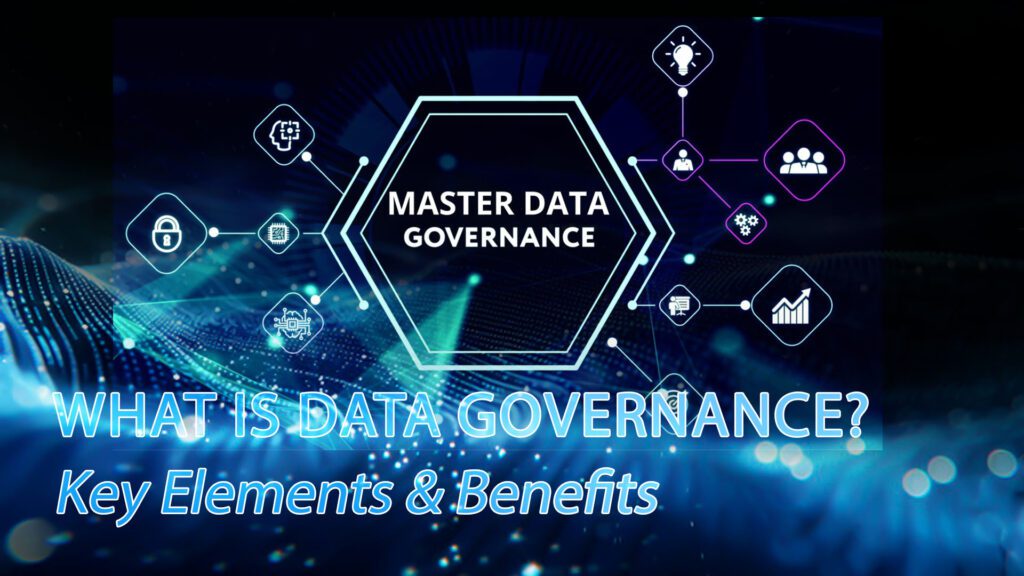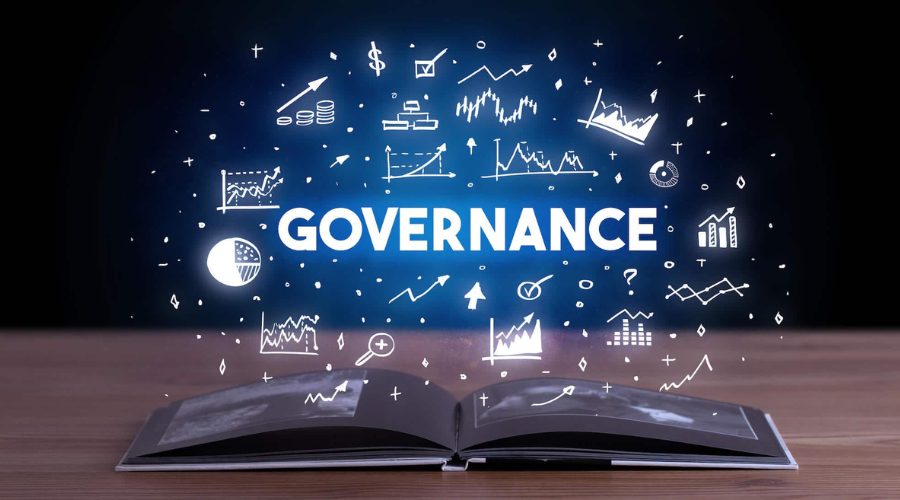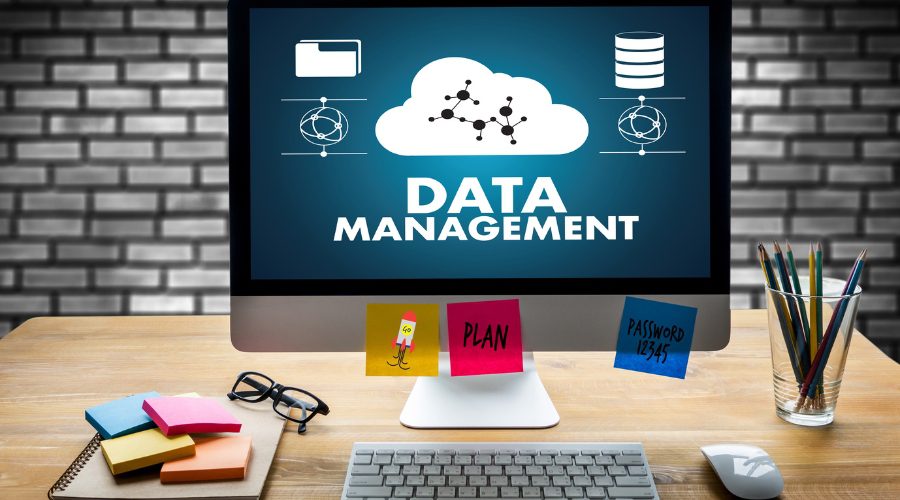Data governance is a comprehensive system of principles, techniques, and tools that are applied to manage an organization’s data assets from birth until they are delivered to consumers. Tailoring data policies and processes to the overall business goals improves the organization’s capability to manage, maintain quality, provide transparency, guard, and comply with regulations on its data.
This guide provides a data governance strategy that ensures data is not only accessible for making informed, data-driven decisions, but also secure from unauthorized usage and in compliance with all relevant compliance requirements.

What Is Data Governance?
Data governance is an organized collection of standards, guidelines, and best practices to ensure that organizational data is accurate, reliable, and consistent. Data governance is a key strategic element of data management that includes the policies, procedures, and practices organizations employ to manage data in an effective manner. This practice offers clear guidelines on how to develop, utilize, and manage data assets so they are aligned with the overall goals and objectives of the organization.
In practice, data governance consists of giving certain roles and responsibilities to data stakeholders, specifying quantifiable data quality requirements, and establishing an overt decision-making process for problems that concern data. Treating data as an important business asset, data governance ensures that it is used in order to achieve business success as well as meet all applicable legal and regulatory standards.

Data governance is a key strategic element of data management
Benefits of Using Data Extraction Services
With the modern data age, companies require timely and accurate data to make informed choices. Data governance makes sure that the collection, categorization, and processing of data are done so that it can be efficiently leveraged.
- Save Time and Automate Processes: Data extract services utilize automated tools to prevent manual data entry, which reduces time-consuming efforts and human errors. This enables companies to have more time for strategic key activities.
- Improve Accuracy and Minimize Errors: The application of technologies such as OCR (Optical Character Recognition) and AI-driven extraction is more precise compared to manual extraction. This results in more assertive and consistent data.
- Minimize Operational Expenses: Automation eliminates the need for massive data entry staff, thus enabling businesses to cut down on labor and operational costs.
- Improved Organization and Management of Data: Extracted data is delivered in a structured format, simplifying its search, organization, and processing. This enables quicker and better-informed business decision-making.
- Facilitate Improved Business Insights: Extracted structured data can be used within business intelligence tools for business trends, customer activities, and performance metrics understanding.
- Enhance Security and Compliance: Secure data handling functionality in the majority of data extraction services allows organizations to meet compliance and data risk reduction demands.
- Less Risk: Well-managed and well-handled data reduces the likelihood of data breaches, errors, and non-compliance situations, leaving the company away from financial and legal issues.
- More Trust and Reputation: When a company manages its information well and securely, it creates even more trust among customers and stakeholders, and ultimately, the reputation of the company improves overall.

Data governance makes sure that the collection, categorization, and processing of data are done
Key Elements of Data Governance
The definition of data governance says it is an official procedure to define the rules, processes, and roles for overseeing data in its life cycle. Effective data governance assists organizations in maintaining their data accurate, secure, and available to enable business objectives. The most significant elements and aims are listed below:
Data Quality
High-quality data provides the basis for precise reports and sound decision-making. Data governance ensures that the information is accurate, complete, consistent, and up-to-date. This means establishing standards of quality, conducting frequent checks on data, and tracking down defects or inconsistencies that would affect business performance.
=> See more: 6 Key Dimensions of Data Quality Explained

High-quality data provides the basis for precise reports and sound decision-making
Data Security
Preventing unauthorized access, misuse, or disclosure of confidential data is one of the key objectives of data governance. Organizations utilize strong security mechanisms like encryption, access control mechanisms, and user authentication that can discourage data breaches and ensure all the data is treated responsibly.

Organizations utilize strong security mechanisms
Compliance
Most companies follow stringent privacy laws such as GDPR in Europe or HIPAA in the United States. According to the data governance definition, companies implement regulations and processes that make sure data is gathered, stored, processed, and disseminated in full accordance with regulations.

Most companies follow stringent privacy laws such as GDPR
Data Management
Data governance provides a clear framework for managing data through its entire lifecycle — from creation and storage to sharing and eventual deletion. This includes assigning roles and responsibilities, applying consistent standards, and ensuring that all departments follow the same guidelines to maintain order and reliability.

Data governance provides a clear framework for managing data
Data Accessibility
Effective data governance not only protects data but also ensures that the right people can access the right information at the right time. This can involve secure self-service tools, permission-based access, and processes that make it easier for authorized users to work with data while maintaining security. By balancing access with control, organizations can encourage a data-driven culture without compromising sensitive information.

Effective data governance not only protects data but also ensures that the right people can access the right information
Data Governance vs. Data Management
Data governance is only one of the key branches of the overarching discipline of data management, a common practice of purchasing, processing, and using information securely and effectively to make strategic choices and enhance business outcomes.
As part of this, data quality management plays a crucial role in ensuring that information used for decision-making is accurate, consistent, and reliable.
Though data governance is encompassed by data management, the latter also encompasses other phases of the data lifecycle, such as processing, storage, and security. These are interrelated in a manner that a change in one automatically impacts the others.
Team coordination is, therefore, inevitable. For instance, in master data governance, a governance team can develop commonalities from its data sources. They may, for instance, collaborate with the data management team in a bid to develop an adequate data model and architecture to enable linking them suitably.
Likewise, in regulating access to information, the governance team can create policies for handling sensitive information such as personally identifiable information (PII). The data management team then executes those policies by giving access directly or by having systems such as role-based access control (RBAC) manage permissions.
=> You might like: Top 11 Data Quality Management Tools for Businesses

The differences between data management and data governance
Data Governance Framework
A data governance framework is an official structure that outlines how an organization governs its key data assets. It provides clear data ownership best practices, definitions of responsibility, and descriptions of how data is to be treated to ensure quality, security, and compliance.
There is no one data governance framework since every model is customized for the organization’s particular data systems, data sources, industry needs, and regulatory compliance needs. The customization makes the framework fit for both operational and strategic objectives.
- There are common elements covered in a data governance framework:
- Establishing program objectives, roles, and responsibilities
- Having monitoring and auditing procedures
- Choosing and deploying data governance tools

A data governance framework is an official structure that outlines how an organization governs its key data assets
Best Practices in Data Governance
It takes a good strategy and real-world practical steps to build a successful data governance program. With tested methods, organizations can design governance processes to enhance data quality, foster trustworthiness, and enable improved decision-making. Some of the best practices are outlined below to lead the way:
- Find business drivers and pain points: Begin with the largest pains and inefficiencies within your data operations. What holds back your organization from reaching its objectives is what forms a shared purpose and inspires teams to get behind the governance effort.
- Align with strategy: Connect your program’s purposes to the company’s values and long-term strategy. Alignment forges trust, secures leadership sponsors, and allows resources to be kept even as priorities change.
- Start small, scale up: Start with targeted pilot projects that can deliver quick, tangible wins. As these wins gain steam, they more and more roll out into larger, more sophisticated initiatives.
- Think beyond technology: Government is not just about tools—it’s also about people and process. Think through how AI, automation, and emerging delivery modes for data will transform jobs, tasks, and workflows.
- Involve cross-functional groups: Use representatives from various departments early on. The blend lends credibility and allows for greater buy-in as the program ages.
- Encourage cooperation and reap lessons learned: Regular gathering of stakeholder input prevents disconnected activity. Codify best practices and learning to enable subsequent projects to leverage successful precedents.
- Value qualitative improvements: Acknowledge that certain advantages, such as enhanced user confidence, enhanced understanding of data, and easier onboarding of new data assets, cannot be measured directly but are well worth the investment.
- Support measurable results: Measure concrete measures such as the number of staffed data steward positions, the percentage of data assets with ownership assigned, or the number of datasets at quality levels. Documented improvement validates the program value.

With tested methods, organizations can design governance processes to enhance data quality
Common Challenges in Data Governance
It is essential to have a good data governance program in place to ensure data quality, compliance, and security, but at the expense of considerable challenges. A good data governance framework can overcome them, but organizations still suffer from common challenges that must be addressed:
- Inadequate sponsorship: Effective governance needs active sponsorship and involvement by leadership within teams. Chief Data Officers (CDOs) sponsor and are accountable to governance, and data stewards encourage awareness and compliance. Without sponsorship, policies would most probably be disregarded, with non-compliance, poor data integrity, and security hazards being the outcome. Also, you can see our guide on what is data integrity.
- Inconsistent data architecture: Aging or separate systems prevent the effective application of governance. Duplicate datasets, storage silos, and inadequate integration bog down progress. The creation of robust data models, storage system integration, and up-to-date data catalogs is needed to automate.
- Data visibility and control: With the multicloud and hybrid configuration nowadays, data comes in multiple forms and locations. It becomes harder to track usage and enforce rules, especially with uncontrolled data streams resulting from shadow IT. There should be evident ownership, access controls, and team coordination so that control can be maintained.
- Greater demand for access: Self-service business intelligence and analytics solutions boosted the number and frequency of data requests. Governance teams must find the balance between accessibility and privacy and security so that systems are set to hold secrets without inhibiting effective workflows.
- AI data needs: Artificial intelligence raises new governance challenges. Mal-handled AI data sets can reveal confidential personal or business data. Staving off these dangers demands AI-focused governance processes and safe, optimized data storage facilities.

It is essential to have a good data governance program in place to ensure data quality
A proper data governance program is not just a compliance obligation, it’s a strategic benefit that enables businesses to keep data quality at its best, secure confidential data, and enable teams to make informed, data-backed decisions. With the help of best practices and cross-functional collaboration, businesses can make their data a trusted and valuable asset that fuels growth.
At DIGI-TEXX, we offer customized solutions for organizations to implement and enhance data governance plans. We have four decades of experience with managing data, advanced technology, and a quality and security focus that enables DIGI-TEXX to assist businesses in constructing robust governance frameworks that address regulatory needs in addition to operational needs. Collaborate with us to reveal the full value of your data.
=> Read more:


